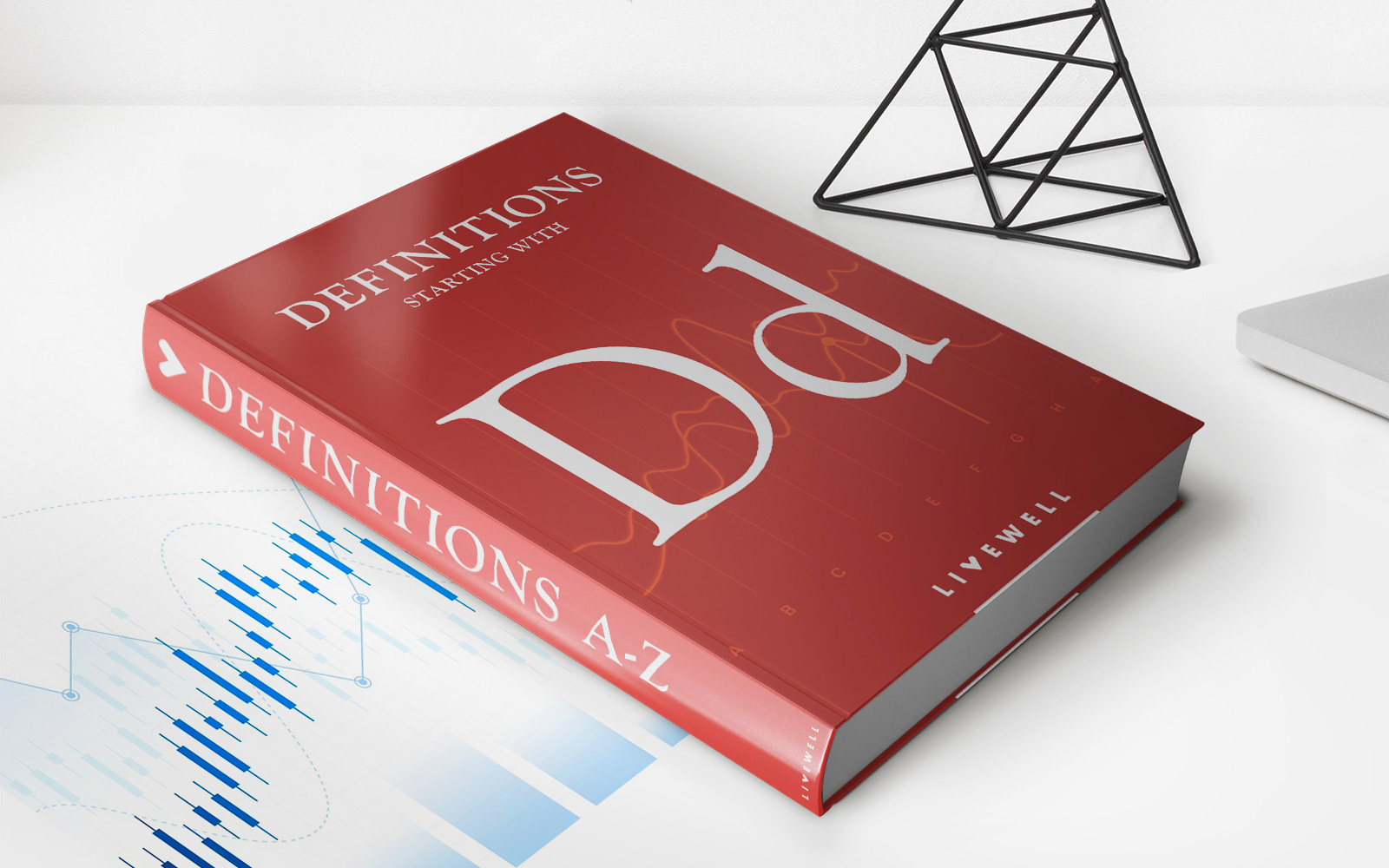

Finance
How Much Is Tornado Insurance?
Published: November 19, 2023
Compare tornado insurance rates and find the best coverage for your needs. Protect your finances from devastating storms with affordable tornado insurance.
(Many of the links in this article redirect to a specific reviewed product. Your purchase of these products through affiliate links helps to generate commission for LiveWell, at no extra cost. Learn more)
Table of Contents
- Introduction
- Understanding Tornado Insurance
- Factors that Influence Tornado Insurance Rates
- Assessing Your Tornado Insurance Needs
- Calculating the Cost of Tornado Insurance
- Tips for Saving Money on Tornado Insurance
- Choosing the Right Tornado Insurance Provider
- Reviewing Tornado Insurance Policy Options
- Frequently Asked Questions about Tornado Insurance
- Conclusion
Introduction
Tornadoes are a natural disaster that can cause significant damage to homes and properties. The destruction they leave in their wake can be devastating, both emotionally and financially. That’s why having tornado insurance is crucial for protecting your assets and providing financial security during such catastrophic events.
Tornado insurance is a specialized form of homeowners or property insurance that covers the damages caused by tornadoes. It safeguards your home, personal belongings, and other structures on your property against the destructive power of these violent storms. While tornadoes can occur in different parts of the world, they are most commonly observed in areas of the United States known as Tornado Alley, which includes states like Texas, Oklahoma, Kansas, and Nebraska.
In the aftermath of a tornado, the cost of repairing or rebuilding damaged structures can be astronomical. Tornado insurance not only helps cover the financial aspects of these repairs but also provides additional living expenses if you are unable to reside in your home during the recovery process.
The cost of tornado insurance can vary depending on several factors, including the location of your home, the value of your property, the coverage limits you choose, and the level of risk in the area you live in. It is important to understand these factors in order to assess your needs and make informed decisions.
In this article, we will delve into the details of tornado insurance, exploring the factors that influence insurance rates, providing tips for saving money, and highlighting the importance of selecting the right tornado insurance provider. We will also discuss the different policy options available and answer some frequently asked questions to help you make educated choices when it comes to protecting your home and assets from the devastating impact of tornadoes.
Understanding Tornado Insurance
Tornado insurance is a specific type of coverage that protects homeowners and property owners against the damages caused by tornadoes. It typically falls under the umbrella of homeowners or property insurance policies, providing financial compensation for repair, rebuilding, or replacement costs resulting from tornado-related damage.
When a tornado strikes, it can cause extensive damage to homes, structures, and personal belongings. This can include roof damage, broken windows, structural collapses, and destruction of personal property. Without adequate insurance coverage, homeowners would have to bear the full financial burden of these repairs or replacements.
Most standard homeowners insurance policies include coverage for wind damage, which can include tornado-related damage. However, it’s essential to review your policy carefully and understand the specific coverage limits and exclusions related to tornadoes. In some cases, additional endorsements or separate tornado insurance may be required for comprehensive coverage.
It’s worth noting that tornado insurance doesn’t typically cover flood or water damage. If a tornado causes water damage due to excessive rain, flooding, or a burst pipe, you may need separate flood insurance to have proper protection. Talk to your insurance agent to ensure you have the necessary coverage for all potential damages.
Another crucial aspect of understanding tornado insurance is knowing the difference between actual cash value (ACV) and replacement cost value (RCV) policies. ACV policies compensate you for the value of damaged property at the time of the loss, considering depreciation. On the other hand, RCV policies provide coverage for the cost of replacing the damaged property with a similar item without factoring in depreciation.
To make an informed decision, it’s essential to evaluate your home’s specific needs, including its location and vulnerability to tornadoes, the value of your belongings, and your financial capacity to cover potential damages. Consulting with an experienced insurance agent can help you understand the coverage options available and choose the most suitable policy.
Now that we have a better understanding of tornado insurance let’s explore the factors that influence tornado insurance rates in the next section.
Factors that Influence Tornado Insurance Rates
When it comes to determining the cost of tornado insurance, several factors come into play. Insurance companies consider these factors to assess the risk associated with insuring a property against tornado damage. Understanding these factors can help homeowners make informed decisions and potentially lower their tornado insurance rates.
- Location: The geographic location of your property plays a significant role in determining tornado insurance rates. Homes located in areas prone to tornado activity, such as Tornado Alley in the United States, may have higher premiums due to the increased risk of damage.
- Construction and materials: The construction quality and materials used in your home’s structure can impact insurance rates. Properties built with sturdy materials that are resistant to wind damage will generally have lower premiums compared to those made with less durable materials.
- Roof type and age: The type and age of your roof can also influence insurance rates. Homes with newer roofs or those constructed with materials specifically designed to withstand high winds, such as impact-resistant shingles, may qualify for discounts.
- Home value and coverage limits: The value of your home and the coverage limits you choose for your tornado insurance policy will also affect the cost. Higher coverage limits mean higher premiums, as the insurance company would have to pay out more in the event of a tornado-related claim.
- Deductible amount: The deductible is the amount you are responsible for paying out of pocket before your insurance coverage kicks in. A higher deductible typically translates to lower premiums, but it’s important to choose a deductible that is affordable for you in case of a claim.
- Claims history: Your claims history can impact tornado insurance rates. If you have a history of filing multiple claims in the past, insurers may consider you a higher risk and charge higher premiums.
- Home security features: Installing security measures such as storm shutters, reinforced doors, and impact-resistant windows can help lower your insurance premiums. These features reduce the risk of damage and show the insurer that you have taken steps to protect your property.
It’s important to note that different insurance companies may weigh these factors differently, which is why it’s crucial to shop around and compare quotes from multiple providers. Working with an experienced insurance agent can also help you navigate through these factors and find the best coverage at a competitive price.
Next, let’s explore how to assess your tornado insurance needs to ensure you have the right level of coverage.
Assessing Your Tornado Insurance Needs
Assessing your tornado insurance needs is an important step in determining the right level of coverage for your property. It involves evaluating various factors and considering the potential risks and costs associated with tornado damage. Here are some key considerations to help you assess your tornado insurance needs:
- Evaluate your property: Assess the value of your home and the contents inside it. Take into account any additional structures on your property, such as garages or sheds. Consider the cost of repairing or rebuilding these structures in the event of tornado damage.
- Know your area’s tornado risk: Research the frequency and intensity of tornadoes in your area. Some regions are more prone to tornadoes than others, and insurance rates may vary accordingly.
- Consider your financial situation: Evaluate your financial ability to absorb the costs associated with tornado damage. Determine how much you can comfortably pay out of pocket for deductible expenses and potential repairs.
- Review your existing insurance policies: Take a close look at your current homeowners or property insurance policy to understand the extent of coverage it provides for tornado-related damages. Determine if any additional endorsements or separate tornado insurance policies are necessary.
- Think about your personal belongings: Consider the value of your personal belongings, such as furniture, appliances, electronics, and clothing. Determine if you need additional coverage to protect these items from tornado damage.
- Evaluate your living arrangements: If a tornado were to render your home uninhabitable, consider the costs of temporary living arrangements, such as renting an apartment or staying in a hotel. Determine if your insurance policy provides coverage for additional living expenses during the recovery period.
- Get professional advice: Consulting with an experienced insurance agent can be invaluable in assessing your tornado insurance needs. They can provide expert guidance, review your specific circumstances, and help you understand the appropriate coverage options for your property.
By carefully evaluating these factors, you can gain a clearer understanding of your tornado insurance needs and make informed decisions about the coverage levels and policy options that are most suitable for your situation.
In the next section, we will discuss how tornado insurance rates are calculated to give you a better idea of the potential costs involved.
Calculating the Cost of Tornado Insurance
The cost of tornado insurance can vary significantly depending on several factors. Insurance companies use these factors to assess the level of risk associated with insuring a property against tornado damage. Understanding how these costs are calculated can help you estimate the potential expenses of tornado insurance coverage. Here are key considerations in calculating the cost of tornado insurance:
- Location: The geographic location of your property plays a major role in determining insurance costs. Homes located in regions with a higher risk of tornadoes will typically have higher premiums.
- Property value: The value of your property influences insurance costs. More valuable homes require higher coverage limits, resulting in increased premiums.
- Deductible amount: The deductible is the amount you must pay out of pocket before insurance coverage takes effect. A higher deductible generally leads to lower premiums, but it’s crucial to choose a deductible you can comfortably afford in the event of a claim.
- Construction materials and features: The materials used in constructing your home, as well as any protective features such as storm shutters or impact-resistant windows, can impact insurance costs. Homes built with durable materials and equipped with protective features may qualify for lower premiums.
- Claims history: Your claims history is an important factor in determining insurance costs. If you have a history of filing multiple claims, insurers may consider you a higher risk, resulting in higher premiums.
- Coverage limits: The coverage limits you choose for tornado insurance can affect the cost. Higher coverage limits mean greater potential payouts for the insurance company and therefore higher premiums.
- Discount eligibility: Some insurers offer discounts for various factors, such as bundling multiple insurance policies with the same company, installing certain safety features, or having a good claims history. Inquire with your insurance provider about potential discounts that could lower your premiums.
It’s important to note that insurance companies may weigh these factors differently, resulting in varying premium rates. To get an accurate estimate of the cost of tornado insurance for your specific property, it is recommended to contact several insurance providers, provide them with the necessary information, and request quotes.
Keep in mind that while tornado insurance may add to your annual expenses, it provides essential coverage and financial protection in the event of a tornado-related disaster. By understanding the factors that influence tornado insurance costs, you can make informed decisions about coverage limits and deductible amounts that balance affordability with adequate protection.
In the next section, we will share some tips to help you save money on tornado insurance.
Tips for Saving Money on Tornado Insurance
Tornado insurance is vital for protecting your home and assets from the devastating impact of tornadoes. However, that doesn’t mean you have to break the bank to obtain adequate coverage. By following these tips, you can potentially save money on your tornado insurance premiums:
- Shop around: Don’t settle for the first insurance quote you receive. Take the time to compare rates and coverage options from multiple insurance providers. Each company may assess risks and offer discounts differently, so it’s essential to explore your options.
- Bundle your policies: Many insurance companies offer discounts when you bundle multiple policies together, such as homeowners and auto insurance. Consolidating your insurance needs with the same provider can lead to substantial savings.
- Improve home security measures: Strengthening the security features of your home, such as installing storm shutters, reinforced doors, or impact-resistant windows, can lower your insurance premiums. These measures reduce the risk of damage and may make you eligible for discounts.
- Increase your deductible: Consider opting for a higher deductible. A higher deductible means you’ll be responsible for more out-of-pocket expenses in the event of a claim, but it can significantly lower your premium costs.
- Maintain a good credit score: Insurance companies often take your credit score into account when determining premiums. Maintaining a good credit score may qualify you for lower rates, as it indicates financial responsibility.
- Keep a claims-free history: Insurance premiums can be influenced by your claims history. If you have a claims-free record, insurers may view you as a lower risk and reward you with lower premiums. Avoid filing claims for small damages if possible.
- Consider additional safety measures: Installing a home security system or a monitored fire alarm system can reduce the risk of damage to your property, making you eligible for discounts on your tornado insurance.
- Review your coverage regularly: Regularly review your tornado insurance coverage to ensure it still aligns with your needs. As your circumstances change over time, you may need to adjust your coverage levels to optimize costs.
Remember, while cost savings are important, it’s crucial not to sacrifice essential coverage for the sake of cheaper premiums. Make sure you have adequate protection to properly safeguard your property and assets.
By implementing these money-saving tips and working closely with a knowledgeable insurance agent, you can find the right balance between cost-efficiency and comprehensive tornado insurance coverage.
In the next section, we will guide you through the process of choosing the right tornado insurance provider.
Choosing the Right Tornado Insurance Provider
Choosing the right tornado insurance provider is essential to ensure you have reliable coverage and exceptional customer service in times of need. With numerous insurance companies available, it can be overwhelming to make a decision. Here are some factors to consider when selecting a tornado insurance provider:
- Reputation and stability: Look for insurance providers with a strong reputation and a history of stability and reliability. Research customer reviews, ratings, and financial strength ratings from independent agencies to gauge the company’s credibility.
- Experience and expertise: Consider insurance companies that have experience in dealing with tornado-related claims and understand the unique risks and challenges associated with tornado-prone areas. An experienced provider can offer valuable insights and guidance.
- Range of coverage options: Assess the range of coverage options available from each provider. Ensure that they offer comprehensive coverage for tornado-related damages and additional living expenses in case your home becomes uninhabitable.
- Coverage limits and deductibles: Compare the coverage limits and deductible options offered by different companies. Choose a provider that allows you to customize your policy to meet your specific needs and financial capabilities.
- Customer service: Evaluate the quality of customer service offered by the insurance companies you’re considering. Opt for providers with responsive and helpful customer support teams who can assist you throughout the claims process.
- Financial strength: Verify the financial strength of the insurance company to ensure that they have the resources to fulfill their obligations in the event of a large-scale disaster. Checking their financial ratings from independent agencies can provide reassurance.
- Discounts and incentives: Inquire about any available discounts or incentives that can help reduce your premiums. Some insurance providers offer discounts for factors such as multiple policy bundles, home security measures, or claims-free history.
- Policy flexibility and customization: Look for insurance providers that offer flexible policies that can be adjusted as your needs change. The ability to customize your coverage according to your specific requirements is crucial to obtaining adequate protection.
- Insurance agent support: Work with insurance agents who are knowledgeable, trustworthy, and responsive. They can help you navigate through the insurance process, answer your questions, and provide expert advice on selecting the right coverage.
Take the time to research and compare different insurance providers before making a decision. Gather quotes from multiple companies, evaluate the coverage options, and consider the overall value provided. Remember, the cheapest option may not always be the best choice. It’s important to balance competitive pricing with reliable coverage and excellent service.
By carefully considering these factors and working with a reputable tornado insurance provider, you can have peace of mind knowing that your home and belongings are well-protected against the devastating effects of tornadoes.
In the next section, we will explore the various policy options available for tornado insurance coverage.
Reviewing Tornado Insurance Policy Options
When it comes to tornado insurance, there are various policy options available to homeowners and property owners. Understanding these options is crucial in selecting the most suitable coverage for your needs. Here are some important policy options to consider when reviewing tornado insurance:
- Homeowners Insurance with Tornado Coverage: Most standard homeowners insurance policies include coverage for wind damage, which can include tornado-related damages. Review your existing policy to understand the extent of coverage for tornadoes and evaluate if any additional endorsements or separate tornado insurance is needed.
- Named Peril vs. All-Risk Policies: Named peril policies specifically list the perils covered, while all-risk policies cover all perils except those specifically excluded. Consider whether you want a policy that specifically includes tornado coverage or opt for an all-risk policy that provides broader protection.
- Actual Cash Value and Replacement Cost Value: Consider the type of coverage you want for your personal belongings. Actual cash value (ACV) policies provide coverage for the value of your damaged belongings, accounting for depreciation. Replacement cost value (RCV) policies cover the cost of replacing the items without factoring in depreciation.
- Additional Living Expenses: Evaluate if your policy includes coverage for additional living expenses. If a tornado renders your home uninhabitable, this coverage helps cover the costs of temporary living arrangements, such as renting an apartment or staying in a hotel, during the recovery period.
- Increased Coverage Limits: Consider if you need to increase your coverage limits to adequately protect your property and valuables. Higher coverage limits result in higher premiums but provide greater financial protection in the event of significant tornado damage.
- Deductible Options: Review the deductible options available. The deductible is the amount you must pay out-of-pocket before insurance coverage kicks in. Choose a deductible that you can comfortably afford in case of a claim, striking a balance between lower premiums and potential out-of-pocket expenses.
- Customized Endorsements: Explore any customized endorsements or additional coverage options available. This could include coverage for specific valuable items, such as jewelry or art, or coverage for structures on your property that are not covered under a standard policy.
- Review and Comparison: Review policies from multiple insurance providers and compare coverages, limits, deductibles, and premiums. This ensures that you have a comprehensive understanding of the available options and can make an informed decision that suits your needs.
When reviewing tornado insurance policies, it’s crucial to carefully read and understand the policy documents, including terms, conditions, and exclusions. If you have any questions or need clarification, don’t hesitate to reach out to your insurance agent for guidance.
Remember that tornado insurance is meant to provide financial protection in the event of a disaster. Take the time to assess your needs, understand the policy options, and select coverage that best aligns with your circumstances and preferences.
In the next section, we will address some common questions about tornado insurance to provide further insight into this type of coverage.
Frequently Asked Questions about Tornado Insurance
Here are some commonly asked questions about tornado insurance, along with their answers:
-
Does homeowners insurance cover tornado damage?
Most standard homeowners insurance policies include coverage for wind damage, which typically extends to tornado-related damages. However, it’s important to review your policy and understand the specific coverage limits and exclusions related to tornadoes. Additional endorsements or separate tornado insurance may be required for comprehensive coverage.
-
Do I need separate tornado insurance if I already have homeowners insurance?
While homeowners insurance often includes coverage for tornado-related damages, it’s essential to review your policy. Depending on your location and the potential risk of tornadoes, you may need additional endorsements or separate tornado insurance to ensure sufficient coverage. Consult with your insurance agent to assess your specific needs.
-
Will tornado insurance cover flood damage caused by a tornado?
No, tornado insurance typically does not cover flood or water damage. If a tornado causes water damage due to excessive rain, flooding, or a burst pipe, you may need separate flood insurance to have proper protection against such perils.
-
How are tornado insurance premiums calculated?
Tornado insurance premiums are calculated based on several factors, including the location of your property, the value of your home, the deductible amount, the construction materials used, and your claims history. Each insurance company may have its own formula for determining premiums, so it’s advisable to obtain quotes from multiple providers to compare rates.
-
What can I do to lower my tornado insurance premiums?
There are several measures you can take to potentially lower your tornado insurance premiums, such as shopping around for quotes, increasing your deductible, improving home security measures, bundling policies, maintaining a good credit score, and avoiding filing multiple claims. Additionally, some insurance providers offer discounts for various factors, so it’s worth inquiring about available discounts and incentives.
-
Can I make changes to my tornado insurance coverage after purchasing a policy?
Yes, you can make changes to your tornado insurance coverage after purchasing a policy. It’s important to review your policy periodically and reassess your coverage needs. If necessary, contact your insurance provider to make adjustments, such as increasing or decreasing coverage limits, changing deductibles, or adding additional endorsements.
-
Is tornado insurance mandatory?
No, tornado insurance is not legally required. However, it is highly recommended, especially if you live in an area prone to tornadoes. Tornadoes can cause significant damage and financial loss, and having insurance provides invaluable protection and peace of mind.
If you have any other questions or specific concerns about tornado insurance, it’s best to consult with an experienced insurance agent who can provide personalized guidance and assistance.
Next, we will conclude the article with a brief summary.
Conclusion
Tornado insurance is a crucial component of protecting your home, belongings, and financial well-being in the face of tornado-related damages. By understanding the ins and outs of tornado insurance, you can make informed decisions about coverage options, select the right insurance provider, and potentially save money on premiums.
When assessing your tornado insurance needs, evaluate the value of your property, consider the risks specific to your area, and determine your financial capacity to handle potential damages. Review your existing homeowners insurance policy to understand the extent of coverage for tornadoes, and consider additional endorsements or separate tornado insurance if necessary.
Factors such as location, construction materials, deductible amounts, and claims history play a role in calculating tornado insurance costs. To save money on premiums, shop around, bundle policies, improve home security measures, and maintain a good credit score. Working closely with an experienced insurance agent can provide valuable insights into coverage options and potential discounts.
When selecting a tornado insurance provider, consider reputation, experience, coverage options, customer service, and financial stability. Review policy options such as homeowners insurance with tornado coverage, named peril vs. all-risk policies, actual cash value vs. replacement cost value, and additional living expense coverage. Ensure that the policy you choose aligns with your specific needs and provides sufficient protection.
By familiarizing yourself with the frequently asked questions surrounding tornado insurance, you gain a better understanding of the coverage and its limitations. Remember, tornado insurance is not mandatory, but it is strongly recommended, especially if you live in a tornado-prone area.
In conclusion, protecting your home and assets from the destructive force of tornadoes requires careful consideration and appropriate insurance coverage. By utilizing the information and tips provided in this article, you can approach tornado insurance with confidence, ensuring the financial security and peace of mind that comes with having comprehensive coverage.














